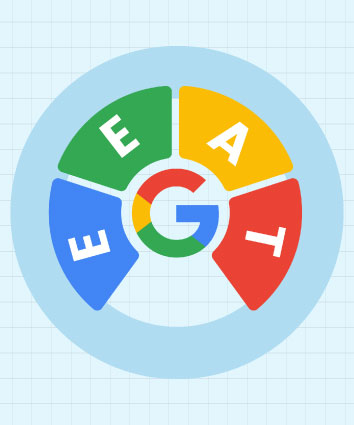
As a leading digital marketing agency, NFlow Technologies understands the importance of search engine optimization (SEO) for restaurants looking to attract more customers and increase their online visibility. In this beginner’s guide, we’ll share our proven strategies and actionable tips to help restaurant owners like you succeed in the competitive google ranking.
What is Restaurant SEO?
Restaurant SEO is the process of optimizing your restaurant’s online presence so that it appears higher in search engine results, particularly in local searches. Imagine someone in your city searching for “best Italian restaurant near me.” With our Organic SEO Service, your restaurant could be the first result they see, making it more likely they’ll choose to dine with you.
SEO for restaurants involves various strategies, from optimizing your Google Business Profile to using the right keywords on your website. The goal is simple: increase your restaurant’s visibility, drive more traffic to your website, and ultimately, get more customers through your doors.
Why Restaurant SEO is Crucial
Potential customers are more likely to find your restaurant through online searches than Paid PPC advertising methods. In fact, 62% of people use Google to research restaurants, and less than 1% click on the second page of search results. Here’s why restaurant SEO should be a top priority:
- Increased Online Visibility: Most people find restaurants through online searches. By appearing at the top of search results, you increase your chances of attracting those hungry customers.
- Targeted Traffic: SEO helps you attract the right kind of visitors—those who are specifically searching for the cuisine or dining experience you offer.
- Cost-Effective Marketing: Unlike traditional advertising, SEO targets users who are already interested in dining out, making it a more efficient use of your marketing budget.
- Long-Term Growth: Once established, a good SEO strategy continues to attract new customers over time, offering sustained growth for your restaurant.
Essential Steps for Restaurant SEO
Now that you understand the importance of SEO, let’s dive into some actionable steps to get you started.
Step 1: Optimize Your Google Business Profile (GBP)
Your Google Business Profile is one of the most critical components of local SEO. It’s what appears when someone searches for your restaurant or for a type of restaurant near them.
- Accurate Information: Ensure your restaurant’s name, address, and phone number (NAP) are consistent across all online platforms.
- Upload High-Quality Photos: Showcase your best dishes, the interior of your restaurant, and any special features (like outdoor seating or a private dining room).
- Add Attributes: Mention if you offer delivery, have vegetarian options, or if your location is wheelchair accessible.
- Collect Reviews: Encourage satisfied customers to leave positive reviews on Google. More reviews not only build credibility but also improve your ranking.
Step 2: Incorporate Relevant Keywords on Your Website
Keywords are the terms potential customers type into search engines. For instance, if you run a sushi restaurant in Seattle, terms like “best sushi in Seattle” or “Seattle sushi restaurant” should be included throughout your website. NFlow Technologies uses advanced tools like Google Keyword Planner, Ahrefs, and SEMrush to identify the most relevant keywords for your restaurant
- Homepage Optimization: Include these keywords in your homepage title, meta description, and within the first few lines of content.
- Menu Pages: Ensure your menu items are listed in text form, not just as images or PDFs, making them searchable.
- Broad keywords like “Italian restaurant”
- Local keywords that include your city or neighborhood to attract nearby customers
Step 3: Build a User-Friendly Website
Your website is the heart of your online presence, so it’s crucial to optimize it for search engines. A well-optimized website isn’t just about keywords—it’s about providing a seamless user experience.
- Fast Loading Speed: Ensure your site loads quickly, especially on mobile devices. Slow websites frustrate users and lead to higher bounce rates, which can hurt your SEO.
- Mobile Optimization: With many searches happening on smartphones, your website must be mobile-friendly.
- Clear Call-to-Actions: Make it easy for visitors to make a reservation, view your menu, or place an order online.
Step 4: Leverage Local Directories and Third-Party Websites
Local SEO is particularly important for restaurants, as it helps you attract nearby customers searching for dining options. Listing your restaurant on local directories like Yelp, TripAdvisor, and other relevant platforms can drive traffic to your website and boost your SEO.
- Claiming, standardizing, and optimizing your listings across major local search properties like Google My Business, Yelp, and TripAdvisor
- Consistency is Key: Ensure your NAP information is consistent across all platforms.
- Engage with Reviews: Regularly monitor and respond to reviews, both positive and negative, to show that you value customer feedback.
Step 5: Avoid Common SEO Mistakes
Even with the best intentions, some common mistakes can derail your SEO efforts.
- Avoid Linking to External Online Ordering Systems: Keep the ordering process on your domain to prevent losing traffic to third-party platforms.
- Don’t Overload with Images and Videos: While visuals are important, too many large files can slow down your website, negatively impacting user experience and SEO.
- Non-Text Menus: PDF menus can be hard to read on mobile devices and aren’t easily indexed by search engines. Use text-based menus instead.
Advanced SEO Tips for Restaurants
Once you’ve mastered the basics, these advanced tips can help take your restaurant’s SEO to the next level:
- Build Backlinks: Earn backlinks from local blogs, news sites, and directories. These links signal to Google that your site is trustworthy and authoritative.
- Use Alt Text for Images: Alt text helps search engines understand what your images depict. For example, an image of a pizza could have alt text like “Margherita pizza at [Restaurant Name].”
- Expand Your Website: Consider adding more pages, such as a blog, an “About Us” page, or a page highlighting special events. More content gives Google more context about your restaurant, improving your search ranking.
- Developing a social media strategy and consistently engaging with your audience
Conclusion: Start Optimizing Today
SEO is a powerful tool for restaurant owners, offering a cost-effective way to attract more customers and increase online orders. By optimizing your Google Business Profile, incorporating local keywords, and enhancing user engagement on your website, you can significantly boost your restaurant’s visibility in search engines. Avoid common mistakes and consider advanced strategies like building backlinks and expanding your website content to stay ahead of the competition.
Remember, SEO is a long-term strategy, but the sooner you start, the sooner you’ll see results. Don’t let your competitors get ahead—begin optimizing your restaurant’s online presence today and watch your reservations grow! Contact us today to learn more about our restaurant SEO services and how we can help you succeed online.

Nevil Bhatt
Nevil is the owner of one of the fastest-growing digital marketing agency in India. Having a great knowledge of the IT field and business management, he decided to bring a revolution in the digital world by providing valuable and customised solutions across the globe. Whether it's real or digital, he knows how to handle sustainable relationships and meaningful interactions.




